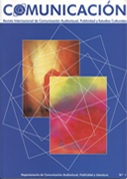Abstract
When a war breaks out, ideological principles and symbolic elements are presented as the signs of identity of the opposing sides. Therefore, ideas and symbols will become the main messages that the authorities will disseminate among the population in their areas of influence. Before developing both aspects, we believe it would be useful to establish and delimit the theoretical framework of the concepts of ideology and symbology, terms which, in our opinion, are often confused and used interchangeably. Subsequently, we will focus on describing the means used to disseminate these messages, which are fundamentally propaganda and, in extreme situations (such as war), commercial/corporate advertising.
References
ALTHUSSER, L. (1984): Ideología y apparatus ideológicos del Estado, Buenos Aires, nueva Visión.
ARCEO VACAS, J. L. (1988): Fundamentos para la teoría y técnica de las Relaciones Públicas, Barcelona, PPU.
BOBBIO, N. y MATEUCCI, N. (1982): Diccionario de política, Madrid, Siglo XXI Editores.
CHEVALIER, J. (1988): Diccionario de símbolos, Barcelona, Helder.
DOMENACH, J.M. (1986): La propaganda política, Buenos Aires, EUDEBA.
EGUIZÁBAL, R. (1988): Historia de la publicidad, Madrid, Eresma y Celeste Ed.
GARCÍA PELAYO, M. (1964): Mitos y símbolos político, Madrid, Taurus.
GONZÁLEZ MARTÍN, J. A. (1996): Teoría general de la publicidad, México, Fondo de Cultura Económica.
GOULDNER, A. (1978): La dialectic de la ideología y la tecnología: Los orígenes, la gramática y el futuro de la ideología, Madrid, Alianza.
HERREROS, M. (1989): Teoría y técnica de la propaganda electoral (forma publicitarias), Barcelona, PPU.
LENK, K. (1988): "Ideología", en Reyes, R. (dir.): Diccionario de Terminología Científicosocial. Aproximación crítica, Madrid, Alianza.
LEÓN, J. L. (1996): Los effects de la publicidad, Barcelona, Ariel.
LOSADA MALVÁREZ, J. C. (1990): Ideología del ejército franquista (1936-1959), Madrid, Istmo.
MANNHEIM, K. (1987): Idelogía y Utopía. Introducción a la sociology del conocimiento, México, Fondo de Cultura Económica.
MILLER, D. (dir.) (1989): Enciclopedia del pensamiento político, Madrid, Alianza.
McCLOSKY, H. (1964): "Consensus and Ideology in American politics", en American Political Science Review, 58.
PIZARROSO QUINTERO, A. (1993): Historia de la propaganda política, Madrid, Tecnos.
SARTORI, G. (1969): "Politics, Ideology and belief systems", en American Political Science Review, 63.
SATUÉ, E. (1995): El diseño gráfica. Desde los orígenes hasta nuestros días, Madrid, Alianza.
SILL, D. L. (dir.) (1979): Enciclopedia Internacional de las Ciencias Sociales, Vol. 5, Madrid, Aguilar.
STOPPINO, M. (1982): "Ideología", en Bobbio y Mateucci: Diccionario de política, Madrid, Siglo XXI Editores.
VAN DIJK, T. A. (2000): Ideología, Un enfoque multidisciplinario, Barcelona, Gedisa.

This work is licensed under a Creative Commons Attribution-NonCommercial-ShareAlike 4.0 International License.
Copyright (c) 2002 Juan Carlos Rodríguez Centeno

